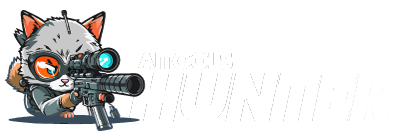Midjourney
MIDJOURNEY: The Future of AI-Generated Art
In the ever-evolving landscape of technology, the creative industry is now witnessing the rise of a groundbreaking innovation—Midjourney. This AI-powered text-to-image generator has already amassed over 8 million active users in just a few months, transforming the way artists and creatives approach their work. With a blend of fascination and concern, visual artists, designers, illustrators, and other creative minds have been monitoring the development of this remarkable tool. Midjourney opens up a world of limitless possibilities, sparking conversations about style appropriation, the role of AI in visual creation, and the future of the creative industry.
Get ready to dive into the world of Midjourney and explore how this revolutionary technology is reshaping the artistic landscape.
Introduction
Throughout human history, technological advancements have empowered some workers while making others obsolete. Automation and artificial intelligence have already had a significant impact on industries like manufacturing and transportation.
Today, the creative industry is at the forefront of this revolution. Visual artists, designers, illustrators, and other creatives are witnessing the development of AI-powered text-to-image generators with a mix of wonder and concern. Leading this market, Midjourney has already garnered over 8 million active users in just a few months.
The AI Text-to-Image Generator: How Does It Work?
AI text-to-image software transforms user input text, or “prompts,” into images. Large datasets of text-image pairs are used to train these AI technologies via machine learning. Midjourney hasn’t released its datasets to the public, but Stable Diffusion, a well-known open-source program, has been more transparent about the data it uses to train its AI. It can be assumed that Midjourney operates on the same principle.
Nonprofit organization LAION compiles text-image pairs from the internet, grouping them into datasets based on criteria like language, resolution, and expected aesthetic ratings, among others. These text-image pairs are provided to LAION by Common Crawl, another nonprofit that aims to democratize access to web information. Common Crawl extracts billions of web pages each month and makes the resulting datasets publicly available.
Training the Midjourney AI
The AI model is trained using these text-image pair datasets after they are collected and organized. Through training, the AI learns to connect an image’s graphical composition, visual structure, and identifiable visual information with the text that appears alongside it.
The AI is trained on increasingly “noisy” repetitions of the image, with random visual noise being progressively added to an image. The process is then reversed, and the AI is tasked with creating an image that visually resembles the first training image using random pixels.
After this training cycle, the AI can begin constructing previously unimaginable images from the noise. In practice, this means a user can now access a text-to-image generator, enter a textual command in a brief text box, and the AI creates an entirely new image from the entered text.
Midjourney: Artistic Plagiarism or Powerful Tool?
AI-generated art has raised ethical questions about the technology’s impact on the creative industry. Some artists worry that the speed and accuracy with which an AI text-to-image converter can produce artwork may render their skills obsolete. However, many see it as an innovative ai tool to augment their creative process.
Advancements in AI-Generated Art
Researchers and tech companies are working on the next phase of generative visual art as AI text-to-image generators continue to improve.
Artists such as Winkowski have already begun incorporating AI-generated tools into their creative processes, utilizing the technology to produce innovative art.
Winkowski recently created a short film titled “Leaving Home,” in which he drew some images and allowed Stable Diffusion to create the rest. As an artist, he sees it as almost having a superpower.
“There’s no doubt that tools like Midjourney are revolutionizing the art world. In our opinion, they will never replace talented artists, but they will have to learn to work with these software programs,” he said.
For those who know how to use them, these tools offer an unlimited source of inspiration. On the other hand, average artists may eventually be replaced by text-to-image generators.
If you want to see what the Midjourney artificial intelligence is capable of, check it out for yourself and explore the future of AI-generated art.
Conclusion
Midjourney is undeniably a game-changer in the realm of digital art and creativity. By harnessing the power of artificial intelligence, this text-to-image generator has opened up new horizons for artists and designers, providing them with an innovative tool to complement their skills and explore uncharted creative territories. While concerns about artistic plagiarism and the potential replacement of human artists are valid, the key lies in embracing and adapting to this cutting-edge technology.
By leveraging the endless possibilities offered by Midjourney, artists can continue to push the boundaries of their craft and redefine the future of art in the digital age.









